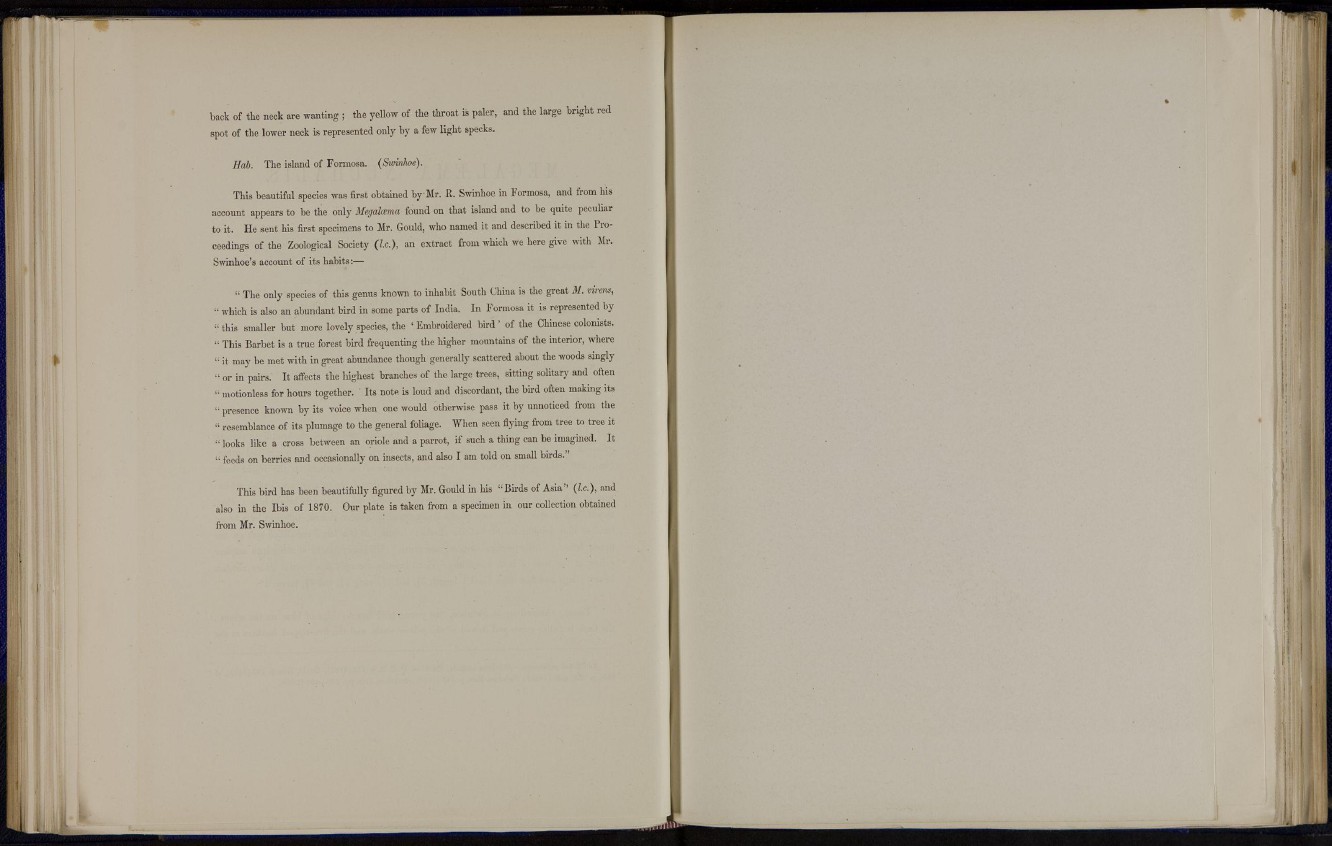
back of the neck are wanting ; the yellow of the tbroat is paler, and the large bright red
spot of the lower neck is represented only by a few light specks.
Hah. The island of Formosa. (Swinhoe).
This beautiful species was first obtained by Mr. R. Swinhoe in Formosa, and from his
account appears to be the only Megalcema found on that island and to be quite peculiar
to it. He sent his first specimens t o Mr. Gould, who named it and described it in the Proceedings
of the Zoological Society (I.e.), an extract from which we here give with Mr.
Swinhoe's account of its habits:—
" The only species of this genus known to inhabit South China is the great M. wrens,
" which is also an abundant bird in some parts of India. In Formosa it is represented by
'• this smaller but more lovely species, the ' Embroidered bird ' of the Chinese colonists.
'• This Barbet is a true forest bird frequenting the higher mountains of the interior, where
'• it may be met with in great abundance though generally scattered about the woods singly
or in pairs. It affects the liighest branches of the large trees, sitting solitary and often
'• motionless for hours together. Its note is loud and discordant, the bird often making its
" presence known by its voice when one would otherwise pass it by unnoticed from the
•' resemblance of its plumage t o the general foliage. When seen flying from tree to tree it
" looks like a cross between an oriole and a parrot, if such a thing can be imagined. It
'• feeds on berries and occasionally on insects, and also I am told on small birds."
This bird has been beautifully figured by Mr. Gould in his "Birds of Asia'' (I.e.), and
also in the Ibis of 1870. Our plate is taken from a specimen in our collection obtained
from Mr. Swinhoe.